Flying high: 2005-10 | Short History of the Kent Spitfires
Wednesday 15th April 2020
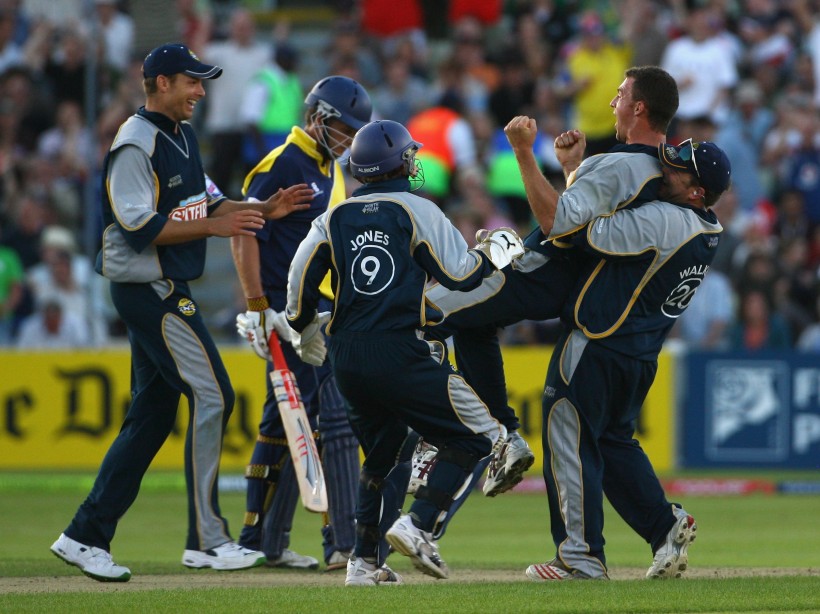
On 3rd November 2004, Kent unveiled a new signing – a middle-order batsman that would replace the likes of Ed Smith and Alex Loudon, who had both left the county that Winter.
Coming to Kent from Leicestershire, 28-year-old Darren Stevens was bought in to the county, because, as Chairman of Cricket Graham Johnson put it: “He has the desire to fulfil his undoubted potential and felt that Kent would give 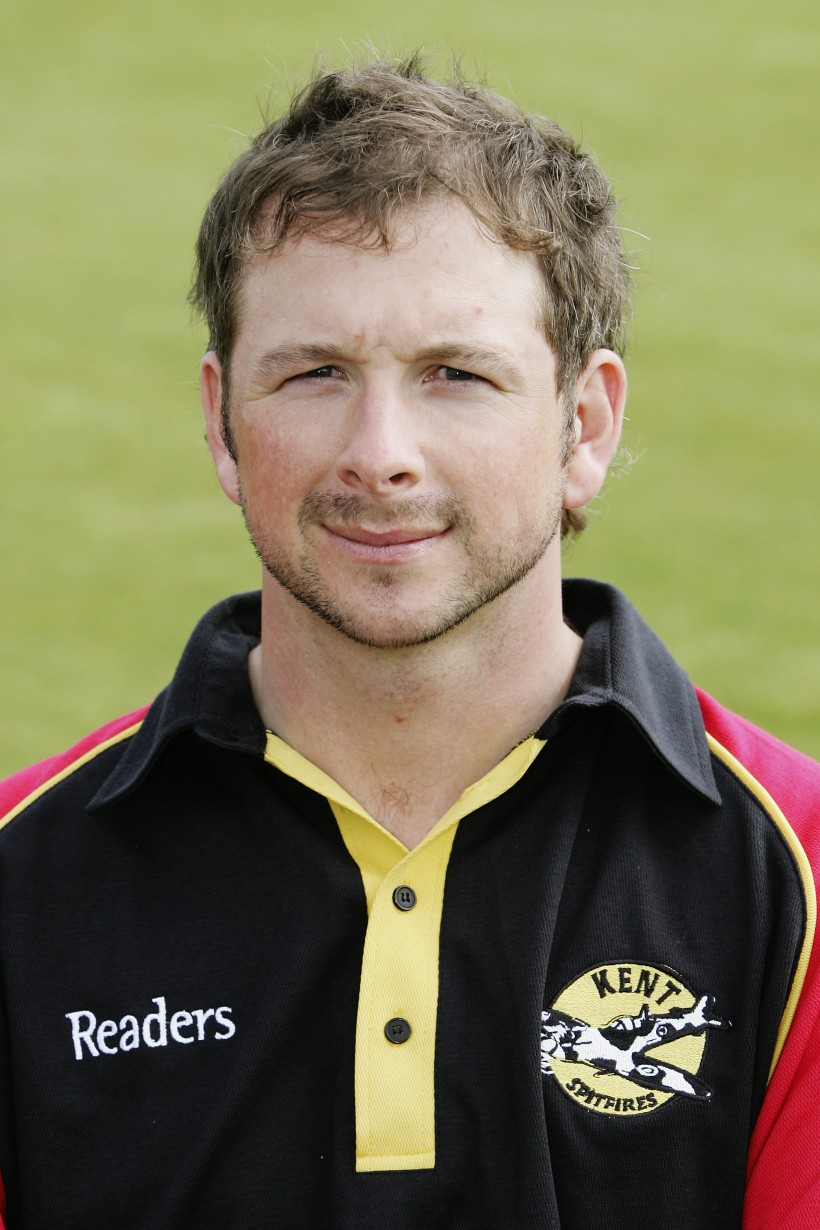 him the best possible opportunity to do so. This is another important step in the development of our squad for next season”.
him the best possible opportunity to do so. This is another important step in the development of our squad for next season”.
On joining Kent, Stevens added: “A number of counties have shown an interest in me, but the opportunity to play on good wickets and in a side with real ambition persuaded me to come to Kent.
“I feel I still have much to prove and look forward to doing so in the seasons ahead.”
Although the Spitfires didn’t set the world alight in white-ball cricket in 2005, a quarter-final appearance in the C&G Trophy was the fruits of Kent’s labour.
Ahead of the 2006 season, the colours that had now become associated with the Kent Spitfires of black, red and yellow were now altered to be navy blue, the colour of Kent’s first-class playing caps, grey and yellow. Danish sports company, North Gear, took over from Readers as Kent’s official kit manufacturer.
The Club also teamed up with New Zealand-born singer-songwriter Ryan Edwards to produce ‘This Our Time’, the official song for the Kent Spitfires in 2006.
That season saw a marked improvement for the Spitfires. The Club had a new captain in Rob Key, who replaced David Fulton in the Winter of 2005. Kent qualified for a quarter-final berth in the Twenty20 Cup in 2006, with a batting line-up boasting the likes of Stevens, Andrew Hall, Martin Van Jaarsveld and Matt Walker, who all averaged over 20.00. With the ball, Hall also excelled with 13 wickets in total at 14.30.
Mixed results in the longer formats of white-ball cricket meant that Kent now had a platform on which they could push on from in 2007.
In the off-season, Kent secured the signatures of Pakistan all-rounder Yasir Arafat, known for his skills in white-ball cricket, and Ryan McLaren on a Kolpak deal. The Spitfires also called upon the raw talent and potential of a then 22-year-old Morné Morkel to bring pace and aggression to the bowling.
More encouraging performances in the now-named Friends Provident Trophy 50-over competition and the Natwest Pro40 were undoubtedly shadowed that year by one glorious day at Edgbaston on 4th August – the Kent Spitfires were crowned T20 champions of England for the first time.
Morkel’s 11 wickets in eight matches proved very useful during the group stages, and Kent looked set to qualify from the groups at an early stage. After Morkel’s deal with the Spitfires ended mid-way through the tournament, Kent turned to some of the hottest bowling property in T20 cricket at the time, Sri Lankan ‘sling king’ Lasith Malinga.
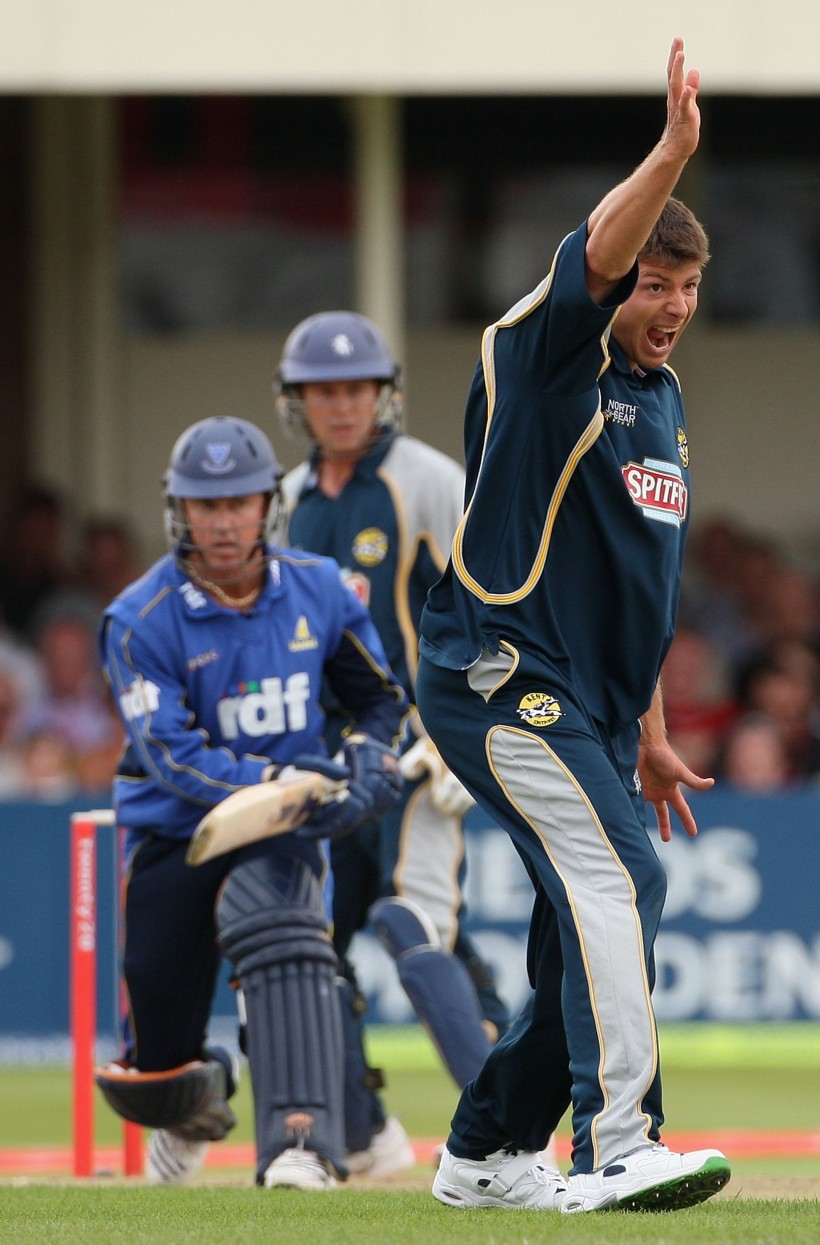
Yet it was Simon Cook who was the pick of Kent’s bowling attack during the 2007 Twenty20 Cup. On the way to winning the trophy, Cook took 17 wickets at 16.17 at a good economy of 6.90, including only leaking 14 runs from his four overs in the final.
After overcoming Sussex Sharks in the semi-final and Kent mascot Bomber the Spitfire winning the ever-entertaining Mascot Race, the stage had been set for the Spitfires in the final against Gloucestershire Gladiators.
Gloucestershire made 146/8 in their 20 overs, a score not helped by a remarkable hat-trick from Kent’s Ryan McLaren which dismissed the dangerous Hamish Marshall, Steve Adshead and Ian Fisher.
The Spitfires reached their target in a thrilling fashion and quite bizarre circumstances, as told by ESPN Cricinfo: “Needing 13 off the final over, Darren Stevens crunched two boundaries off an overawed Carl Greenidge, but in chaotic scenes there was confusion over if the match had actually been won.
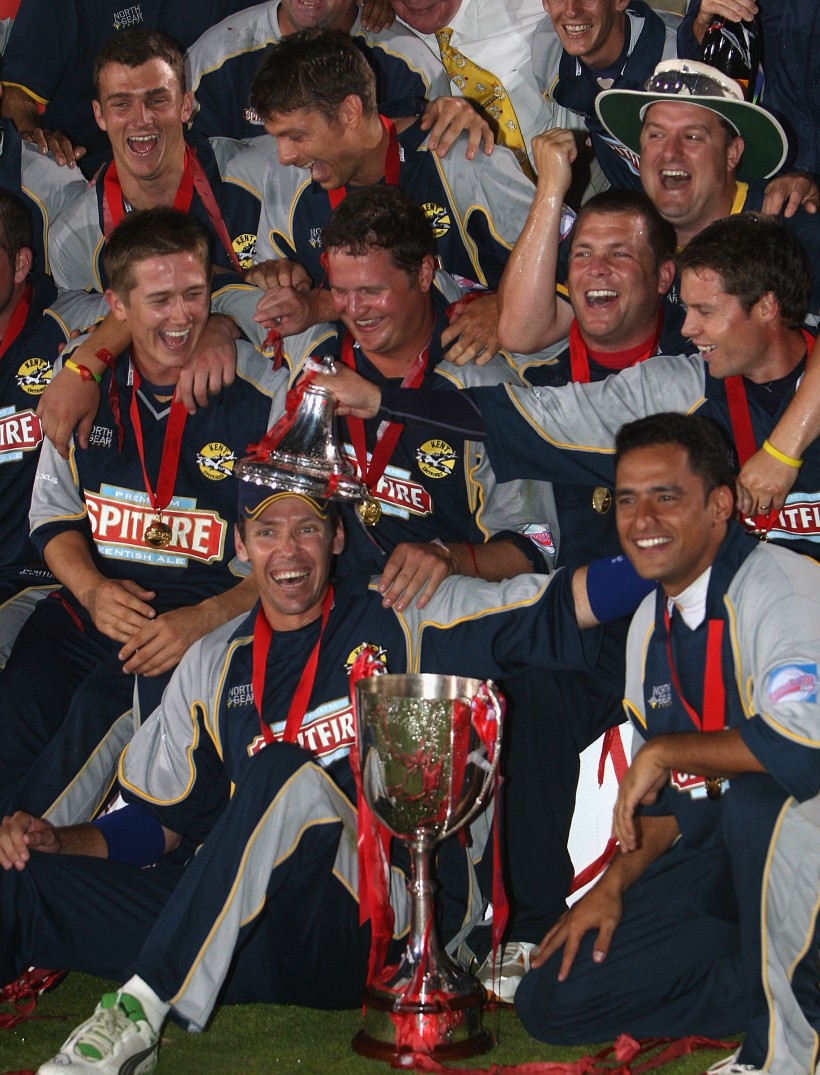
“The equation had come down to six off three balls when Stevens launched Greenidge over cover. Kent’s batsmen ran off to begin celebrating, but Gloucestershire were ready for another ball and the umpires weren’t sure either. It had been missed, apparently by everyone except TV, that a no-ball had also been called. After a consultation between the umpires the Kent celebrations began in front of a near full-house.”
The Spitfires had secured the Club’s first silverware in the T20 format, and the Spitfires were now at the top of the tree in this relatively new form of the game.
Any fears of a muted T20 title defence in 2008 were unfounded. Kent announced the signing of all-rounder Azhar Mahmood and the all-rounder soon hit the ground running. In Kent’s third-placed qualification from the South Group, Mahmood combined with Yasir Arafat to score runs in the middle of the order and consistently take wickets, Arafat even more so.
The Spitfires found themselves in another Twenty20 Cup Final, and Arafat’s 21 wickets in the tournament, the most of any bowler, had played a huge part in getting them there. Even though Kent lost out to Middlesex in the final despite 52 from Rob Key and 2/20 from Arafat, 451 tournament runs from an up-and-coming Joe Denly and 16 wickets at 16.50 contributed by James Tredwell cemented Kent’s place as a big name in T20 cricket. Yasir Arafat ended the 2008 tournament with 23 wickets at just 14.82.
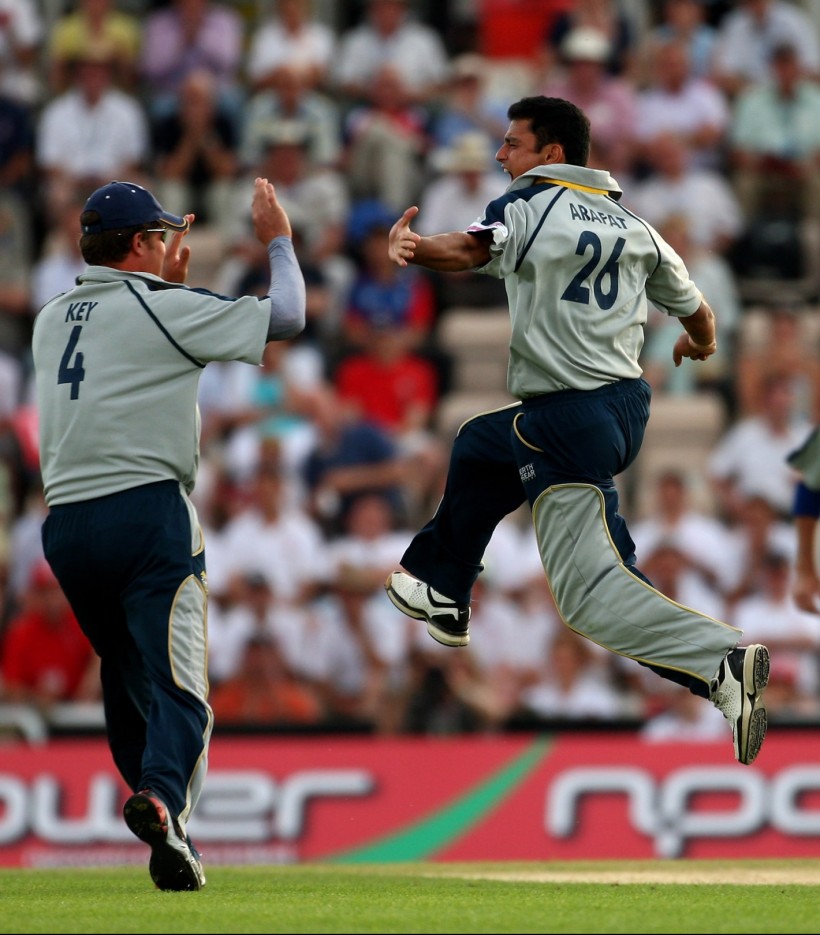
Conversely to the year before, the Spitfires had reached another final in 2008 in the Friends Provident Trophy. Yasir Arafat had another huge return in this tournament, with 24 wickets overall at 15.95, and Martin Van Jaarsveld scored a mammoth 660 runs with four centuries in only nine matches – an average of 110.00. ‘MVJ’ had scored in 122 not out in the semi-final at Durham, in a match where Joe Denly also recorded 102 to help propel Kent into the 2018 Friends Provident Trophy Final.
In front of a packed house at Lord’s, Kent Spitfires fought against Essex Eagles. Van Jaarsveld’s score of 58 and Ryan McLaren’s 63 runs kept Kent in with a shout despite wickets falling elsewhere, but Essex were able to chase down 214 within 50 overs, no doubt with thanks to Grant Flower’s 70 not out. Kent had made a white-ball final twice in 2008.
In 2009, Samurai Sportswear became the Club’s official kit manufacturer, and with that came different colours for the Twenty20 Cup and one-day competition. In T20s, Kent returned to black as the main colour with yellow flashes in line with their Spitfires logo, whilst navy blue and red were chosen in one-day competition.
Kent failed to qualify from Group C in the Friends Provident Trophy, but achieved a third-placed finish in Division Two of the NatWest Pro40 League, Darren Stevens greatly contributing with 231 runs at 38.50 and four wickets at 24.00. Azhar Mahmood topped Kent’s bowling charts with eight wickets at 32.75.
In the Twenty20 Cup, the Spitfires reached their third Finals Day on the bounce, even though they were without their talisman Yasir Arafat.
The Guardian summed-up the Spitfires’ win over Durham Dynamos in the quarter final with: “In front of an 8,000 crowd in Canterbury – the biggest at St. Lawrence in over a decade – [Kent] skittled the Dynamos out for 93, to win with 16 balls to spare.”
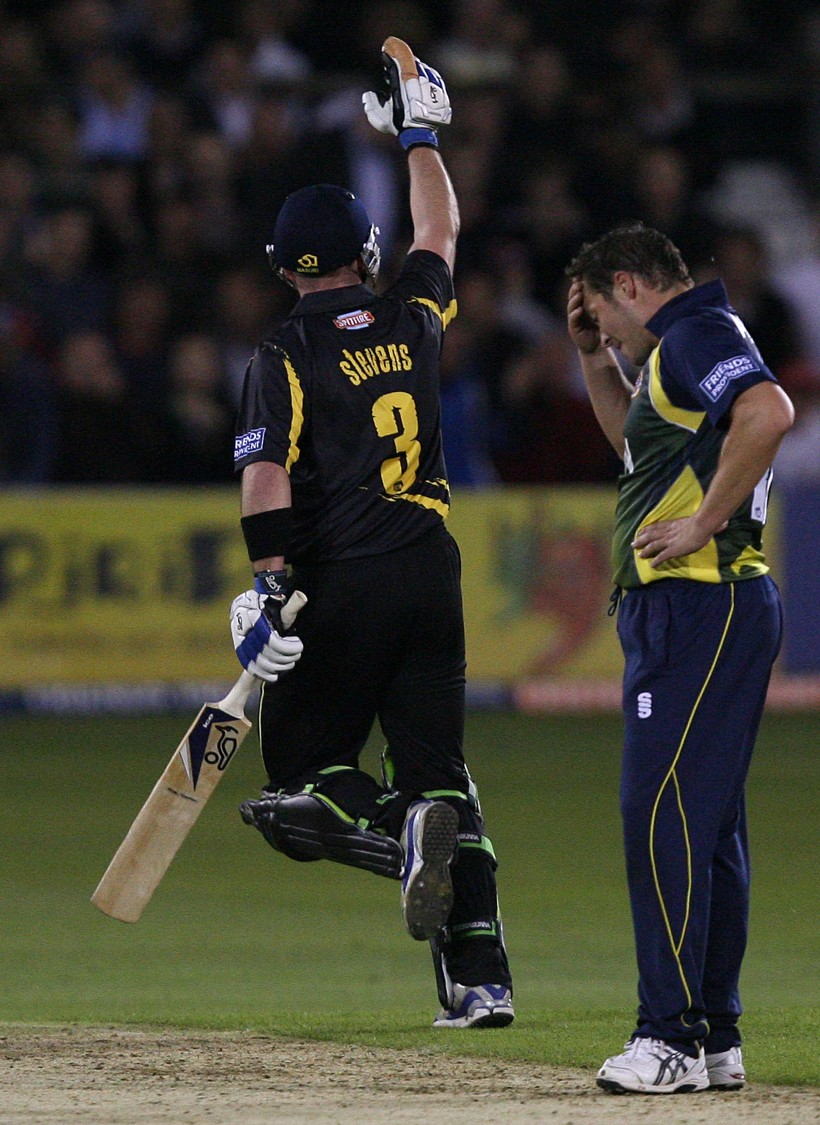
Throughout the tournament, Stevens’ Pro40 form was mirrored in the T20, scoring the most runs out of any Spitfires star – 326 in 12 matches at 59.33, with a strike rate of 144.12.
Again, Azhar Mahmood took the most wickets for Kent with 16 at 20.50. After losing the toss in the Semi Final and being put in by Somerset, Joe Denly’s departure for a three-ball duck and losing Van Jaarsveld and Geraint Jones
meant that Kent were 31/3 inside the powerplay. Somerset chased down Kent’s 145/5 in 18.5 overs, only losing three wickets.
The landscape of white-ball cricket changed in 2010 – the 50-over Friends Provident Trophy was shelved to leave two tournaments – the now popular money-maker Twenty20 Cup, and the Clydesdale Bank Pro40 League, which Kent were allocated to be in Group C.
Kent and Samurai Sportswear also produced a special shirt for the Pro40 League, harking back to the original sky blue and navy “V” design last seen in 1993.
Stevens was to have another destructive T20 season, smashing 369 runs in 14 matches and taking 12 wickets at 23.91, but the Spitfires failed to Qualify from the South Group of the ‘Friends Provident T20’ for the first time in over three years, even though Simon Cook had another destructive tournament with the ball, taking 21 wickets at 19.66, and overseas signing Malinga Bandara contributing with 17 wickets with his leg-spin.
Kent finished second in Group C of the Clydesdale Bank Pro40, however the new format of the tournament meant that only the group winners were to qualify. Joe Denly and Martin Van Jaarsveld had both recorded centuries, each averaging over 46.00 with the bat, and Kent Cricket Academy product Matt Coles really announced himself on the county circuit, taking the most wickets for Kent in the Pro40: 14 at 10.57.
By Liam Knight
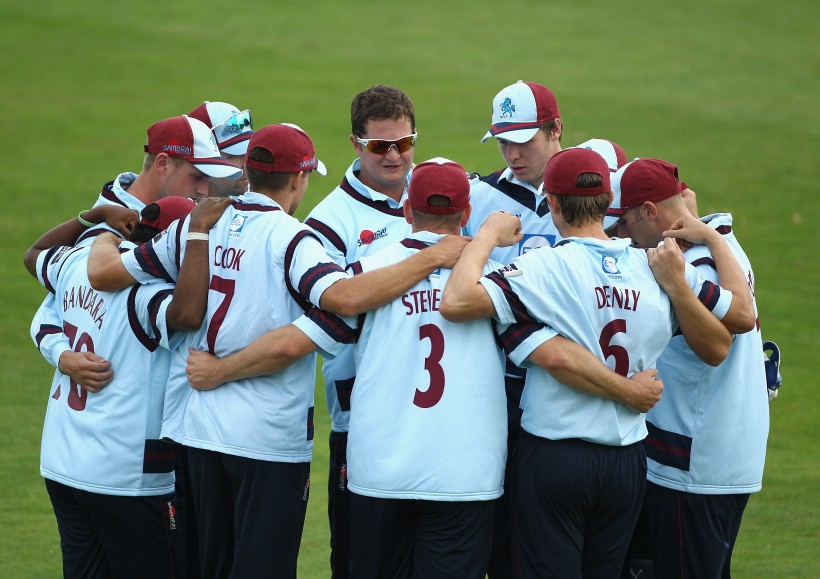
Our ever-popular 2019 & 2020 Vitality Blast shirt is back in stock on the Kent Cricket Online Shop now >>>

